NRAO Newsletter
Volume Vol#, Issue Iss#
Day# Month# Year#
NRAO Newsletter
Volume Vol#, Issue Iss# • Day# Month# Year#
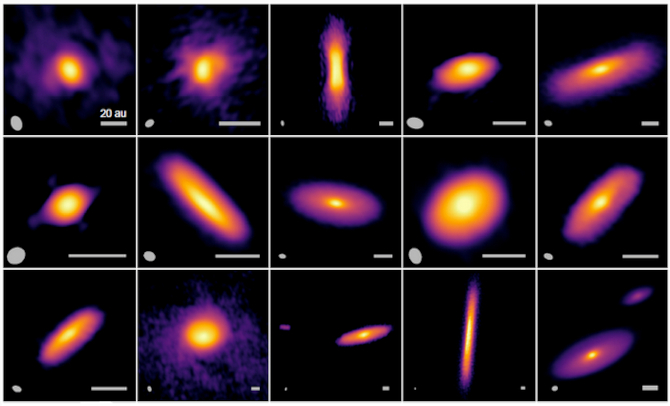 The eDisk program focuses on searching for substructures in disks around 12 Class 0 and 7 Class I protostars in nearby (< 200 pc) star-forming regions through 1.3 mm continuum observations at a resolution of ~7 AU (0."04). Credit: ALMA (ESO/NAOJ/NRAO), Ohashi et al.
The eDisk program focuses on searching for substructures in disks around 12 Class 0 and 7 Class I protostars in nearby (< 200 pc) star-forming regions through 1.3 mm continuum observations at a resolution of ~7 AU (0."04). Credit: ALMA (ESO/NAOJ/NRAO), Ohashi et al.
Upcoming Events

International Symposium on Space Terahertz Technology (ISSTT)
April 7 - 11, 2024 | Charlottesville, VA

20th Synthesis Imaging Workshop
May 15 - 22, 2024 | Socorro, NM

International Microwave Symposium
June 17 - 21, 2024 | Washington, DC
2024 Caribbean Future of Science
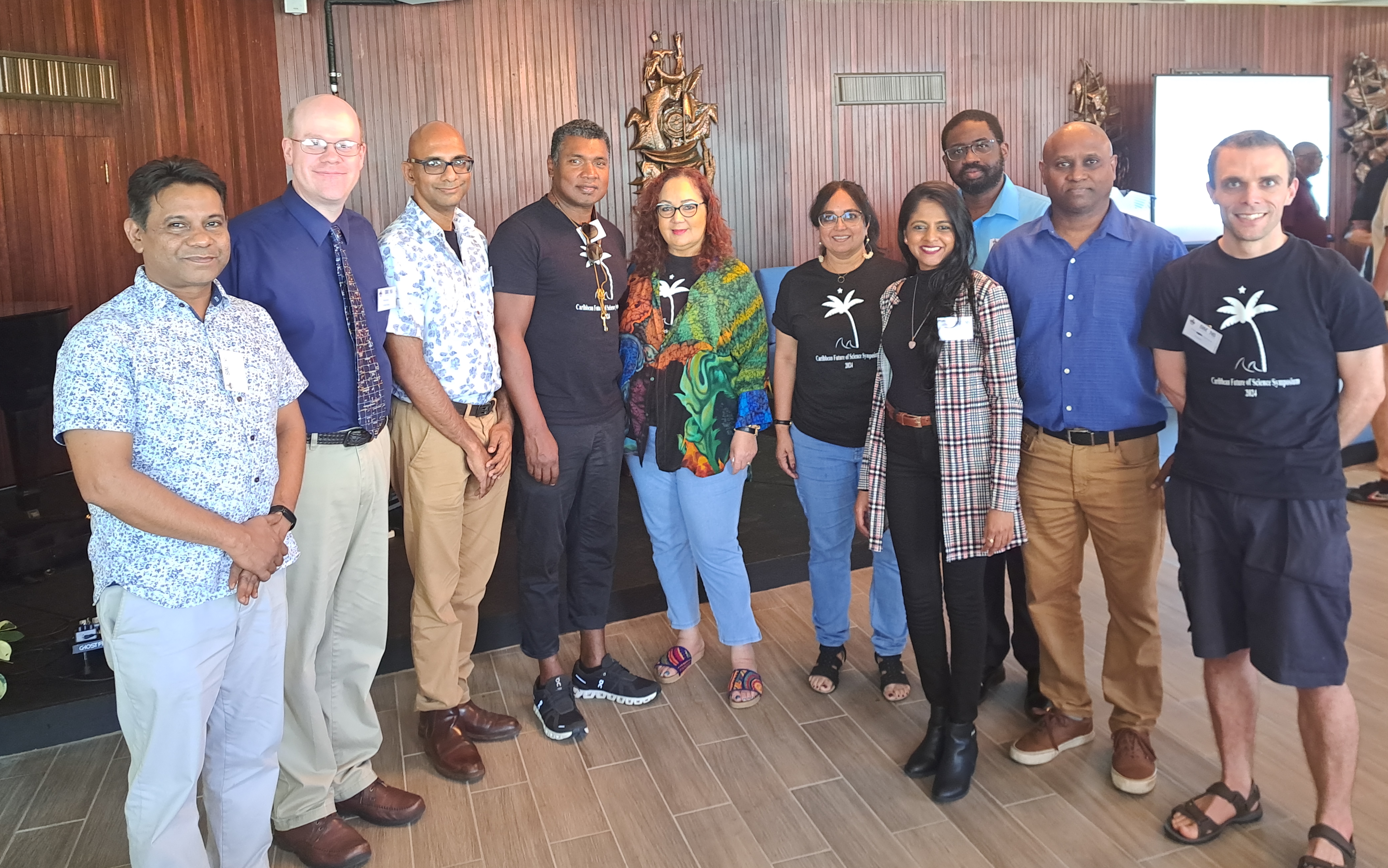
(L-R): Randy Ramadhar Singh (UWI), Brian Kent (NRAO), Isa Mohammed (Caribbean Astronomy), Stephon Alexander (Brown University), Rose-Marie Belle Antoine (UWI), Shirin Haque (UWI), Sian Ramdass (UWI), Abuenameh Aiyejina (UWI), Roger Andrews (UWI), Christopher Harrison (Newcastle University)
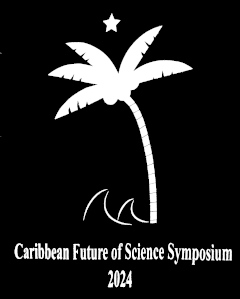
This symposium brought together, from the Caribbean and the international community, leading physicists, computer scientists, astronomers, technologists, entrepreneurs, policy makers, conservationists, and leaders to engage in events, conversations, and collaborations to imagine the future of science and technology in the Caribbean. The symposium synergized conversations, collaboration and networking, to create new bridges and opportunities between Caribbean scientists, students, and the larger scientific community.
The NRAO and University of the West Indies (UWI), St. Augustine, Trinidad and Tobago, collaborate on both the NRAO NINE and RADIAL programs with Professor Shirin Haque.
This collaborative event, proudly hosted by the University of the West Indies, St. Augustine, Trinidad, and Sound+Science Inc., received generous funding from the Simons Foundation.
2024 NRAO/GBO Postdoctoral Symposium
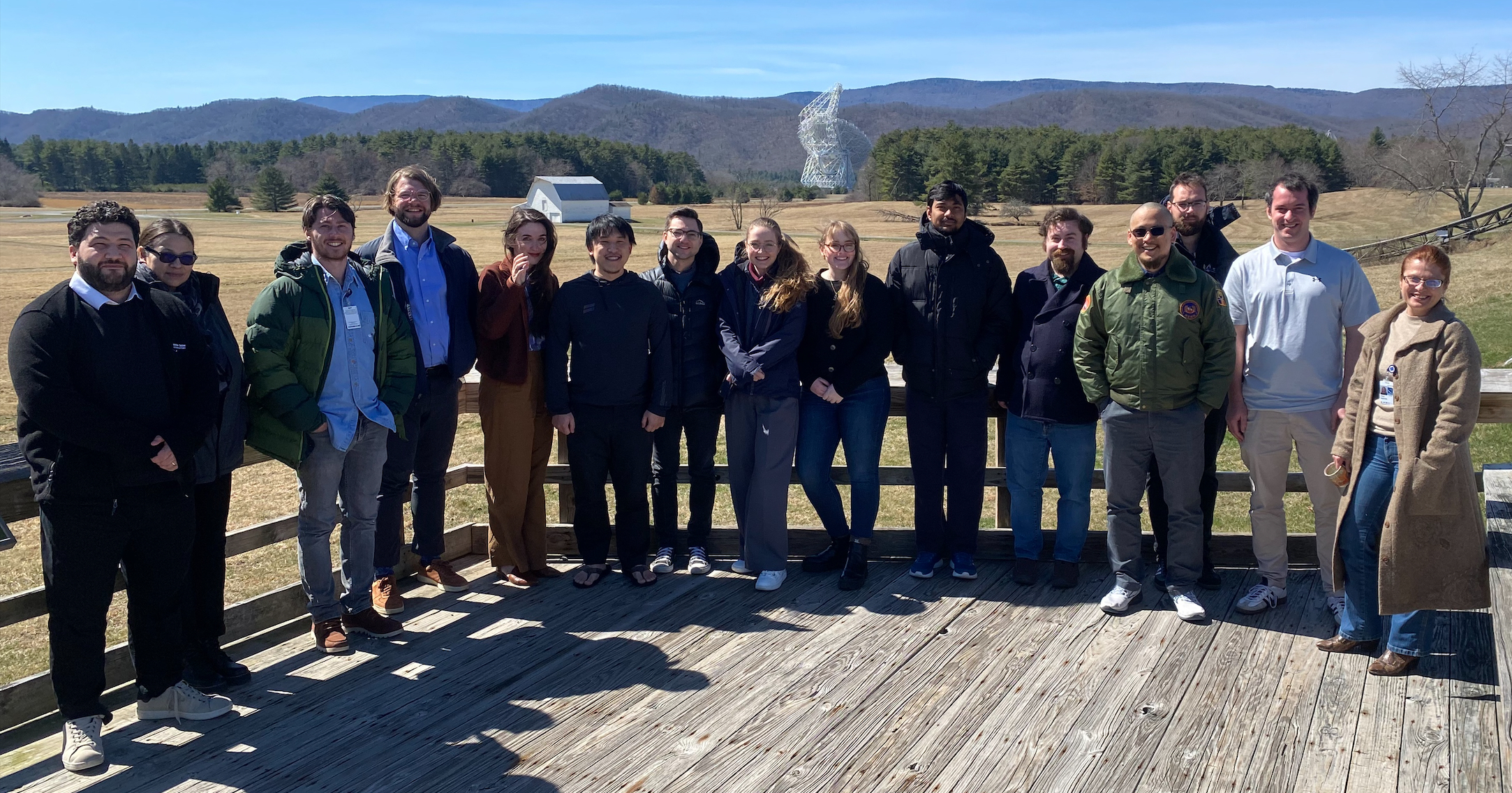
(L-R): Luis Henry Quiroga-Nunez, Julia Blue Bird, Jacob Turner, Tom Rice, Rebecca Charbonneau, Dillon Dong, Alex Saffer, Cosima Eibensteiner, Samantha Scibelli, Lankeswar Dey, Ross Jennings, Tao-Chung Ching, Hendrik Mueller, Michael Rugel, Anna Kapinska
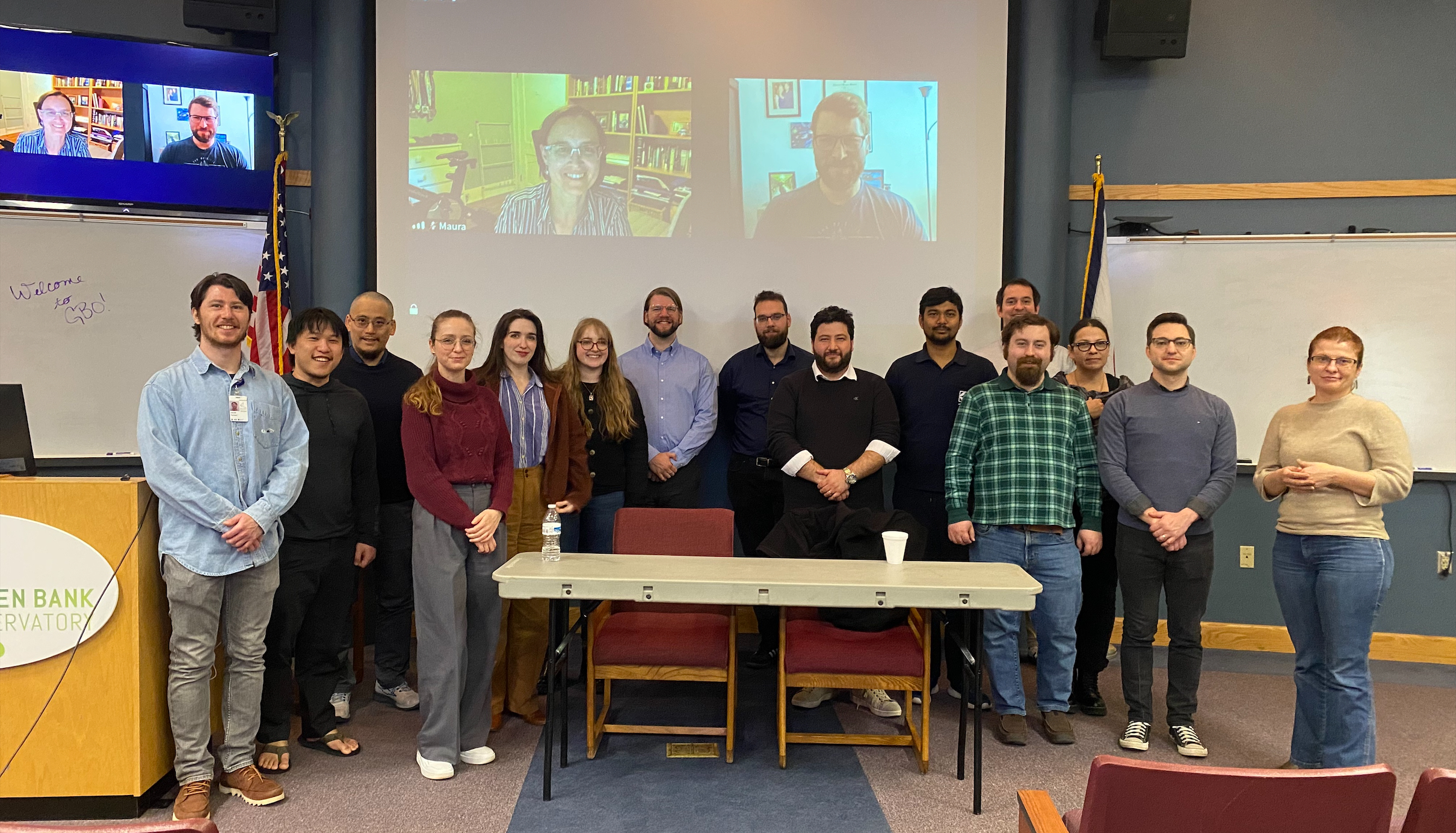
The 19th Postdoctoral Science Symposium was held on March 18 - 20, 2024 at the Green Bank Observatory, West Virginia, in a hybrid (virtual and in person) format. The annual symposium brings together the resident and non-resident Jansky fellows along with NRAO & Green Bank Observatory (GBO) postdocs in order to highlight their current research, share ideas, and establish collaborations. Talks were given by our group of postdoctoral researchers on a wide variety of exciting and cutting edge science.
The organizing committee was pleased to have Luis Henry Quiroga-Nunez (Florida Tech) as Keynote Speaker this year.
Panelists participating in the hybrid career panel session:
o Maura McLaughlin (WVU)
o Luis Henry Quiroga-Nunez (Florida Tech)
o Tom Rice (AAS)
o Justin Ellis (Bionic Health)
Deep Imaging at a National Scale
High sensitivity imaging with interferometric radio telescopes requires processing large volumes of data using algorithms with high arithmetic intensity (number of floating-point operations (FLOPS) per byte of data). With a typical data volume in the 100s of Terabyte range, the estimated computing power needed for imaging with next-generation telescopes like the ngVLA and SKA is in the 10s of PetaFLOPS/sec range (ngVLA Memo #4). This size of computing, which would require parallel processing across 1000s for nodes with GPUs to harvest the necessary computing power, poses the biggest challenge for the next generation of data processing systems. This combination of large computing power needed to process large data volumes seems to also occupy a relatively new portion of the parameter space for both, astronomers as users and for the super-computing centers as resource providers.
Therefore, and as a path-finder for ngVLA-scale processing, we deployed the computational intensive components of the Algorithm Architecture (paper in preparation) on a scale about 10x larger (O(100) GPUs) than what has been attempted so far at NRAO (O(10) GPUs) to investigate the operational and computational challenges of distributed computing at this scale. For this, in collaboration with the Center for High Throughput Computing (CHTC, Univ. of Wisconsin-Madison, WI), we used a nation-wide network of computers in the Open Science Pool (OSPool), U.S. National Science Foundation's Pathways for Advancing Throughput computing (PATh), San Diego Supercomputer Center (SDSC) at the Univ. of California San Diego and the National Research Platform (NRP).
Even with current telescopes, deep imaging (noise limits of O(micro Jy/beam) require 100s of compute nodes with GPUs for parallel processing to harvest a few Peta FLOPS of computing power to process tens of terabytes of data collected over many hours of observing. As a result, imaging of such existing data in the telescope data archives for deep imaging has not yet been possible due to excessive runtime of weeks per iteration. To demonstrate a path to enable such scientific goals, here, in order to focus on the scalability and the robustness of the tool-chain necessary for the large scale parallel computing, we chose the data for the Hubble Ultra-Deep Field (HUDF) taken with the VLA at S- and C-band with a target noise of 0.5 microJy/beam (uid://evla/pdb/2867513; PI: Dr. Wiphu Rujopakarn).
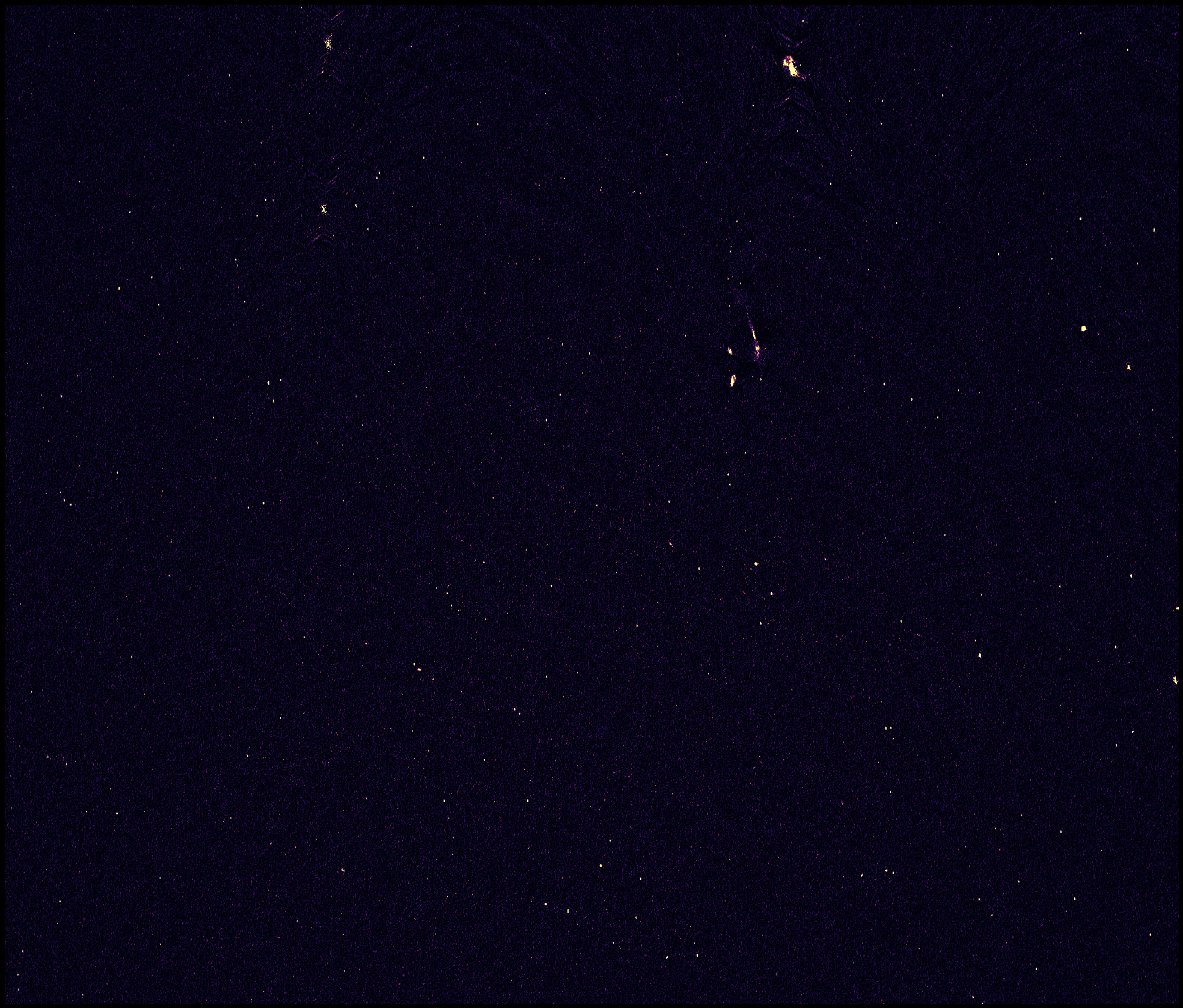
Using about 100 GPUs running in parallel to process about 1.7 Terabytes of data for Stokes-I imaging, iterations reached convergence in about one day of runtime, corresponding to an overall processing throughput of more than 1 Terabyte per hour. We achieved a RMS noise of about 1 microJy/beam, making this one of the deepest images ever made with the VLA (Figure 1, left, click to enlarge). The AW-Projection algorithm was used for imaging to account for the direction-dependent effects due to the non co-planar geometry and the instrumental time- and frequency-dependence of the antenna primary beams (PB). Figure 2 (below, click to enlarge) shows the configuration of the computing resources used. The full data volume was partitioned into approximately 10 GB chunks and staged from NRAO DSOC to the CHTC at the University of Wisconsin-Madison. The data was accessed along the time axis of the database for distribution across the remote compute nodes to optimize the High Throughput Computing component of the architecture. On the remote nodes, these data partitions were locally accessed along the frequency axis for optimizing the High Performance Computing (HPC) component of the architecture. The execution of the various software components of the architecture was then managed by the software that interfaces with the OSPool/PATh runtime infrastructure.
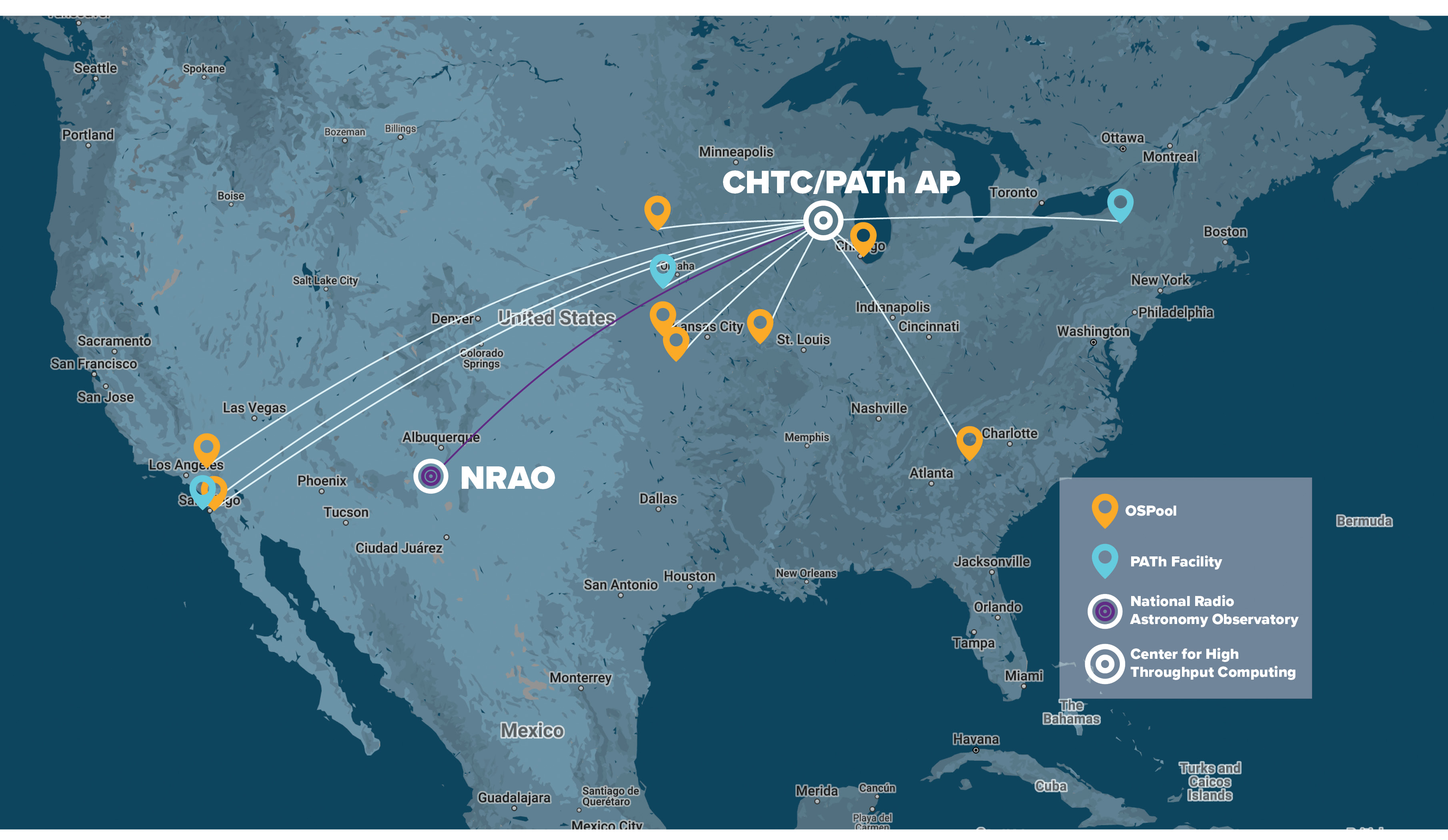
For imaging, we used the software from the LibRA project where the algorithmically-significant scientific software has been derived from the larger CASA code base. The distributed version of the AW-Projection algorithm for imaging was deployed using standalone computer programs which uses the Kokkos framework for performance portability (developed in a collaborative effort of two DOE organizations - the Office of Science and the National Nuclear Security Administration). This allowed the computations to be deployed seamlessly on 4 different types of GPUs in a network of remote hosts running an unspecified flavor of the Linux OS without the need for code modifications or re-implementation. Apart from enabling new computing capability, this use of existing well-tested scientific code base with one of the widest coverage of scientific capabilities also demonstrates its re-usability and architectural flexibility, both of which are critical for scaling along multiple axis for the algorithmic and computational needs of large next-generation telescopes like the ngVLA and SKA. The software was deployed on nodes from California to New York with the most universities involved in a single, GPU-based workload, from large institutions like the University of California San Diego to small ones like Emporia University (Clemson, SC). This allowed us to not only test the LibRA software stack for scaling in throughput and in smoothly deploying it on a Wide Area Network of heterogeneous GPUs, but also exercise the CHTC/PATh infrastructure to support projects requiring high performance computing nodes embedded in a distributed high throughput computing infrastructure to process Terabytes of data. These distributed capacity contribution were united using open source technologies like HTCondor for computing and Pelican for data delivery, developed by the NSF-funded Partnership to Advance Throughput Computing (PATh; NSF grant #2030508) and the Pelican Project (NSF grant #2331480), respectively. The data was accessed via the NRP's data caches deployed in the network backbone of Internet2 and federated into the Open Science Data Federation. This work therefore also validated a mode of scientific computing expected to become more and more common in utilizing the national cyberinfrastructure for open science and harvesting the computing power it affords.
This line of work is a step towards the larger goal of achieving a processing throughput of at least O(10) Terabytes/hour using the algorithms deemed necessary to achieve the stated scientific goals of the next-generation telescopes, and also making this mode of computing accessible to users of current telescopes. More work is therefore in progress to further improve the imaging performance and also increase the parallelization to ngVLA scale. Among other things, this would require more computing power to include corrections for terms in the imaging equation that we had to switch-off in this first attempt. Work on these fronts is currently in progress within the NRAO/ARDG for algorithms R&D, for computing throughput in collaboration with CHTC/SDSC and with groups like the Kokkos group for performance portable HPC software. We also have active collaborations with industry partners to align all of these developments with the continuous evolution of computing hardware technologies and platforms.
ALMA Ambassadors Program for Cycle 12
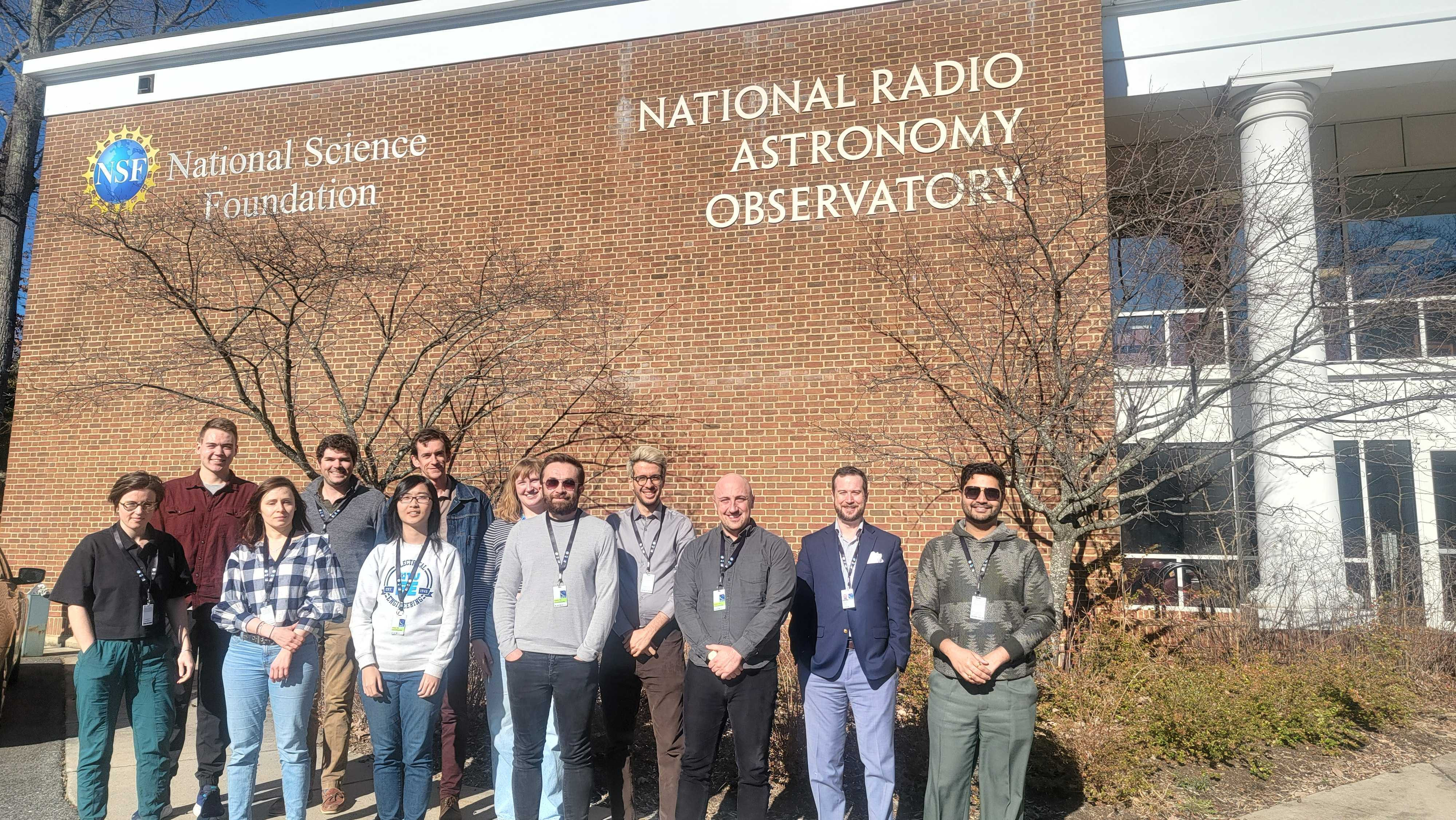
Members of the Cycle 11 ALMA Ambassador cohort visited the NRAO Headquarters and the NAASC in Charlottesville, VA for training in February 2024.
The North American ALMA Science Center (NAASC) is accepting applications for the ALMA Ambassadors Program, with a deadline of May 24, 2024. The program provides training and up to a $10,000 USD research grant (other forms of payment are available, see below) to postdoctoral researchers, senior graduate students, and early career researchers interested in expanding their ALMA/radio interferometry expertise and sharing that knowledge with their home (or other) institutions. For Cycle 12, ALMA Ambassadors can choose to support the community by organizing and hosting (1) ALMA Cycle 12 proposal preparation support workshops, and/or (2) ALMA-focused data processing and analysis workshops (Fall 2024).
For information on Cycle 11 Proposal Preparation Workshops see the Community Events page.
The NAASC will provide travel support for the training as well as all talk materials, supplies, and infrastructure for the workshops hosted by the ALMA Ambassadors. Some radio or submillimeter interferometry experience is preferred but not required. Applicants must be based at a North American institution. If you do not meet these requirements but are interested in learning more about the training we are offering, please contact George Privon to discuss opportunities. We will consider both individual and coordinated applications from users in the same institution or region.
The NAASC will host the selected Ambassadors at the National Radio Astronomy Observatory headquarters in Charlottesville, Virginia in August 2024 and/or February 2025 to receive in-depth training. Training will include topics related to ALMA proposal writing, including: interferometry basics, ALMA science capabilities, recent ALMA headlines, use of the ALMA Observing Tool, and guidance for speaking on these topics. The training also includes a poster session where ALMA Ambassadors will showcase their own science to their fellow ambassadors and the local astronomical community, including NRAO staff. Ambassadors must host a proposal preparation workshop in advance of the Cycle 12 ALMA proposal deadline (Spring 2025) and/or data analysis and processing workshops. These workshops may be held at the ambassador's home institute, an alternate location, or virtually. ALMA Ambassadors will also make themselves available to help their local community between the call for proposals and the deadline and support other NAASC activities.
The deadline to apply is May 24, 2024. For more information, please visit the ALMA Ambassadors website.
ALMA Program News
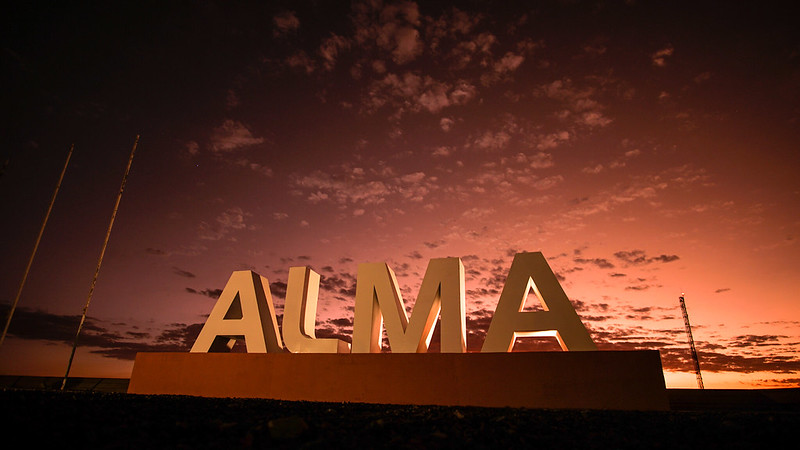 Image Credit - Pablo Carillo
Image Credit - Pablo Carillo
ALMA Observing Status
The array continues Cycle 10 observations, ALMA is now in compact configuration C-1. 'Altiplanic winter' is winding down at Chajnantor.
ALMA News
The ALMA Wideband Sensitivity Upgrade is progressing on schedule. A special session on the WSU was held at the AAS New Orleans meeting.
Cycle 11 Call for Proposals
The Call for Proposals opened on March 21 and will close on April 25 for Cycle 11, which is anticipated to begin on October 1, 2024. The following technical capabilities will be available for the first time in Cycle 11:
- Highest-frequency and longest-baseline observations with Band 9 in C-10 configuration, and Band 10 in configurations of C-9 and C-10.
- Full polarization in Band 1 on the 12-m Array with the same polarization capability and accuracy as in Band 3-7.
- Band 1 on the 7-m Array for Stokes I only (no Stokes Q/U/V).
- 4x4-bit spectral mode on the 7-m Array (dual polarization).
Observations that are particularly encouraged include:
- ACA, especially in the Local Sidereal Time (LST) range of 20h to 10h.
- High frequency (Bands 8, 9, and 10) in any configuration.
- Low frequency (Bands 1, 3, and 4) at long baselines (C-7, C-8, C-9, and C-10).
This will help ensure there are no gaps in the observing queue, particularly in the case that the weather is better or worse than nominal.
ALMA Ambassadors Cycle 11 Proposal Preparation Workshops
The ALMA Ambassadors are holding a series of Proposal Preparation Workshops in preparation for the Cycle 11 deadline (April 25, 2024). The goal of these events is to provide users with the knowledge they need to carry out cutting-edge scientific research using the ALMA facilities. We are particularly interested in reaching new users, so no experience with radio astronomy is required to participate. Attend an event and learn about the latest ALMA capabilities, the basics of radio interferometry, and more. See the Community Events page for details.
Upcoming Meetings
- March 25-29thm 2024: Debris Disks in the Sonoran Desert Tuscon AZ - NAASC sponsored
- April 8-11, 2024: International Symposium on Space Terahertz Technology, Charlottesville, VA
- April 22-26, 2024: Raising the Veil on Star Formation Near & Far - A conference in honour of Richard Hills, Cambridge, UK
- May 28-31, 2024: Spatio-spectral modeling of interferometric data: preparing for the wideband era, NRAO, Charlottesville - NAASC sponsored
- June 24-28, 2024: The Promises and Challenges of the ALMA Wideband Sensitivity Upgrade, ESO, Garching, Germany
- June 24-28th, 2024: Cool Stars, San Diego CA - NAASC sponsored
- September 24-27, 2024: Born in Fire: Eruptive Stars and Planet Formation, Santiago, Chile - NAASC sponsored
ngVLA Project News
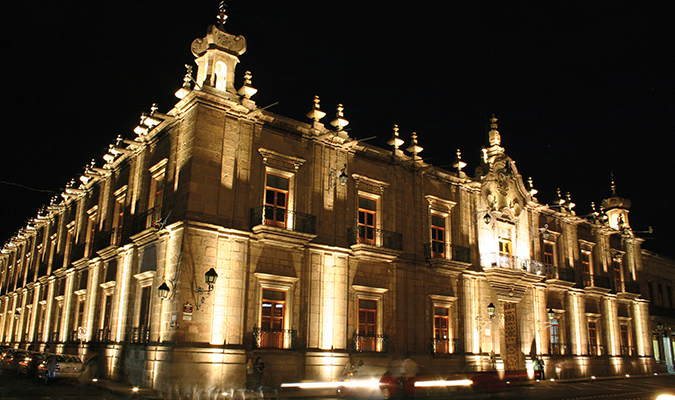
Follow the Monarchs: A Journey to Explore the Cosmos at (Sub)milliarcsecond Scales with the ngVLA
This ngVLA international science conference will be held November 11-14 in person in the UNESCO World Heritage site of Morelia, Mexico. The conference will highlight and explore the novel scientific opportunities that will unfold with the unprecedented angular resolution and sensitivity capabilities offered by this new flagship facility. The conference will coincide with the Monarch butterflies completing their migration journey from Canada and the US to the mountains surrounding Morelia. Registration and abstract submission will open on April 1.
A variety of oral presentations and posters will be featured, with a special focus on the new science that will be possible at high angular resolution. The ngVLA will allow, for the first time, the detection of thermal emission at 1 mas angular scales, as well as unprecedented high fidelity imaging of non-thermal emission on scales less than 1 mas. Researchers within and beyond radio astronomy expertise are invited to engage in discussions, share insights, and start to plan the groundbreaking science that the ngVLA will make possible. We particularly encourage the participation of early career scientists, who will be the major users of this observatory.
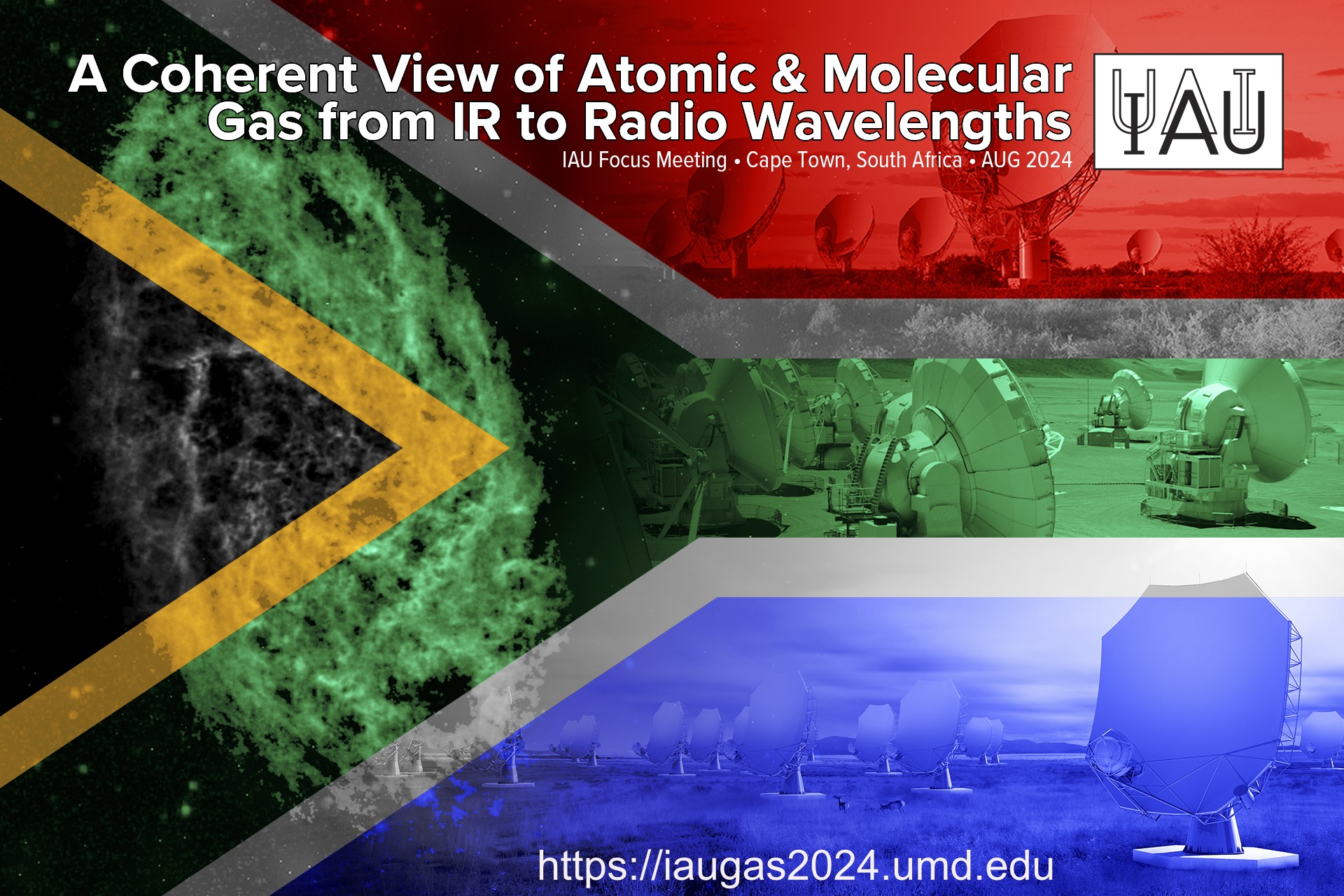
A Coherent View of Atomic and Molecular Gas from Infrared to Radio Wavelengths
Graphic by Jeff Hellerman
This IAU Focus Meeting 2 will be held August 6-7 in person in Cape Town, South Africa at the XXXII International Astronomical Union (IAU) General Assembly. The meeting will explore how the work taking place at existing facilities is shaping our understanding of the interstellar medium structure and feedback in our own Milky Way and external galaxies, and how this work is re-framing the science that will be addressed by the remarkable capabilities of future radio observatories. Contributed speakers will be announced on April 8.
ngVLA Science - Complex Organic Molecules in Protoplanetary Disks
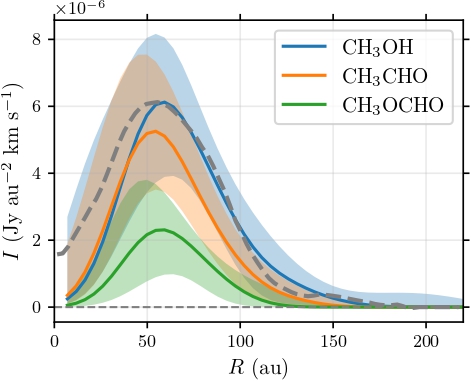
Radial intensity profile of three COM lines in ALMA Band 3 from the V883 Ori disk (Yamato et al. 2024). Dashed curve shows the profile of a CH3OH line in Band 6 (Tobin et al. 2023).
Planets form and acquire their initial compositions in protoplanetary disks. Constraining the chemical composition of disks is therefore a key to understanding the formation environment of planets (e.g., Oberg et al. 2023). The isotopic composition of molecules is also essential to trace their formation history from the interstellar medium (ISM) to planetary systems (e.g., Mumma and Charnley 2011).
Using ALMA Band 3, we observed complex organic molecules (COMs), which can be precursors of prebiotic molecules, in the disk around the FU Ori type outbursting star V883 Ori (Yamato et al. 2024). This disk's snow line is shifted outward to ~40-80 au (Cieza et al. 2016, Tobin et al. 2023) due to the episodic accretion heating, allowing us to observe freshly sublimated COMs.
Our observations detect ten oxygen-bearing COMs, including 13C-isotopologues for the first time in a protoplanetary disk. The 12C/13C ratios of the COMs in the disk are significantly lower than the canonical ratio in the local ISM (Wilson 1999), indicating the efficient formation of COMs from 13C-rich CO. Previous observations of the disk in ALMA Bands 6 and 7 commonly show a central depression in the spatial distribution of molecular line emission, possibly due to absorption by the intense dust continuum emission (van't Hoff et al. 2018, Lee et al. 2019, Tobin et al. 2023).
Since the optical depth of the dust continuum is lower at lower frequencies, our observations in Band 3 were expected to probe the COMs in the inner region hidden in Bands 6 and 7. But contrary to this expectation, the analysis of the COM line profiles in Band 3 shows that their radial distributions likely exhibit a similar central depression as in Band 6 (see figure). This implies that the dust continuum emission is still optically thick in Band 3, hiding the molecular line emission within 40 au. Since the inner region of the disk is of particular interest as a direct planet- and comet-forming region, it is crucial to reveal the chemical abundances of COMs there for direct comparison with, e.g., comets.
The ngVLA will provide a unique opportunity to directly probe COMs in the inner disk, via its high angular resolution and high sensitivity at centimeter wavelengths where the dust continuum emission will be fully optically thin (e.g., De Simone et al. 2020). The ngVLA will unveil the complete chemical inventory of COMs, including their isotopic compositions, in this unique laboratory of disk chemistry, paving the way to infer the possible chemical inheritance or reset in planet- and comet-forming regions.
Since 2015 the acronym ngVLA has appeared in 1100+ publications indexed in the SAO/NASA Astrophysics Data System. This article continues a regular feature intended to showcase some of those publications. We are especially interested in showcasing work done by early-career researchers. The collection of showcase articles can be viewed online. Anyone wishing to volunteer to author a feature should contact Joan Wrobel.
NRAO and SpaceX: Protecting Radio Astronomy
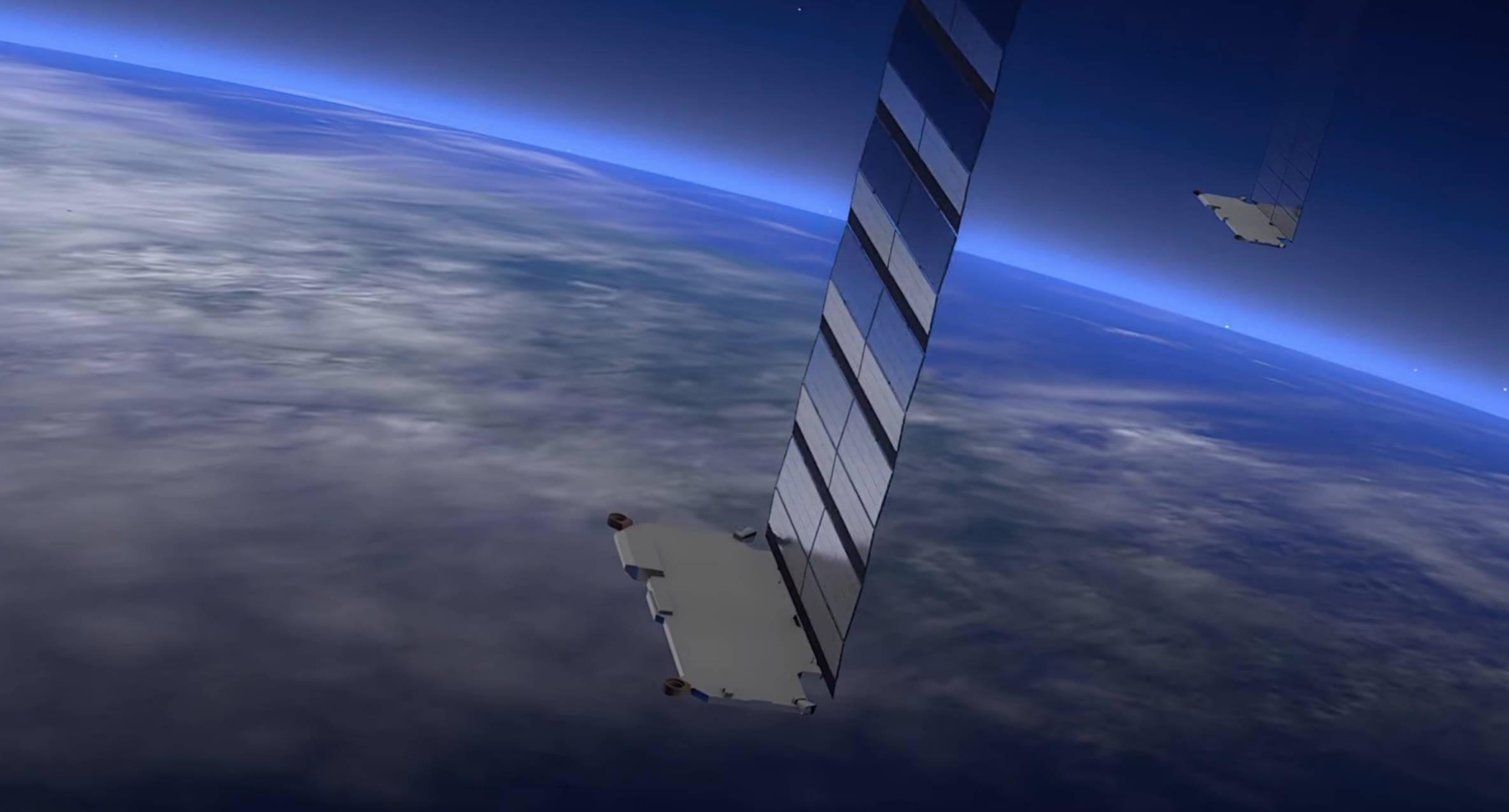
NRAO and SpaceX have engaged in coordinated experiments involving NRAO telescopes and the Starlink satellite constellation for over two years. Early experiments began in late 2021 with the deployment of working Starlink user terminals near the Jansky Very Large Array (VLA) in New Mexico and have continued to the present day. These experiments highlight the ways in which satellite constellations and radio telescopes might be able to coexist, provided there is mutual awareness of what the other is doing.
Supported by the National Science Foundation, NRAO and SpaceX are developing a system called Operational Data Sharing (ODS) that provides the current status (position in the sky and observing frequency) of two of its telescopes: the VLA in New Mexico and the Green Bank Telescope (GBT) in West Virginia. SpaceX is able to incorporate these data into its operational algorithm so that its Starlink satellites can steer their downlink beams away the NRAO telescope “boresight” (where the telescopes are pointed in the sky) at the moment an observation is taking place. This adaptation helps to ensure critical internet connectivity for users of the Starlink system while protecting and potentially expanding the frequency bands that radio astronomers can use for their research.
Click here to watch the video.
Image: One World Network /NSF/AUI/NRAO/GBO.
VLA Open House - April 20, 2024
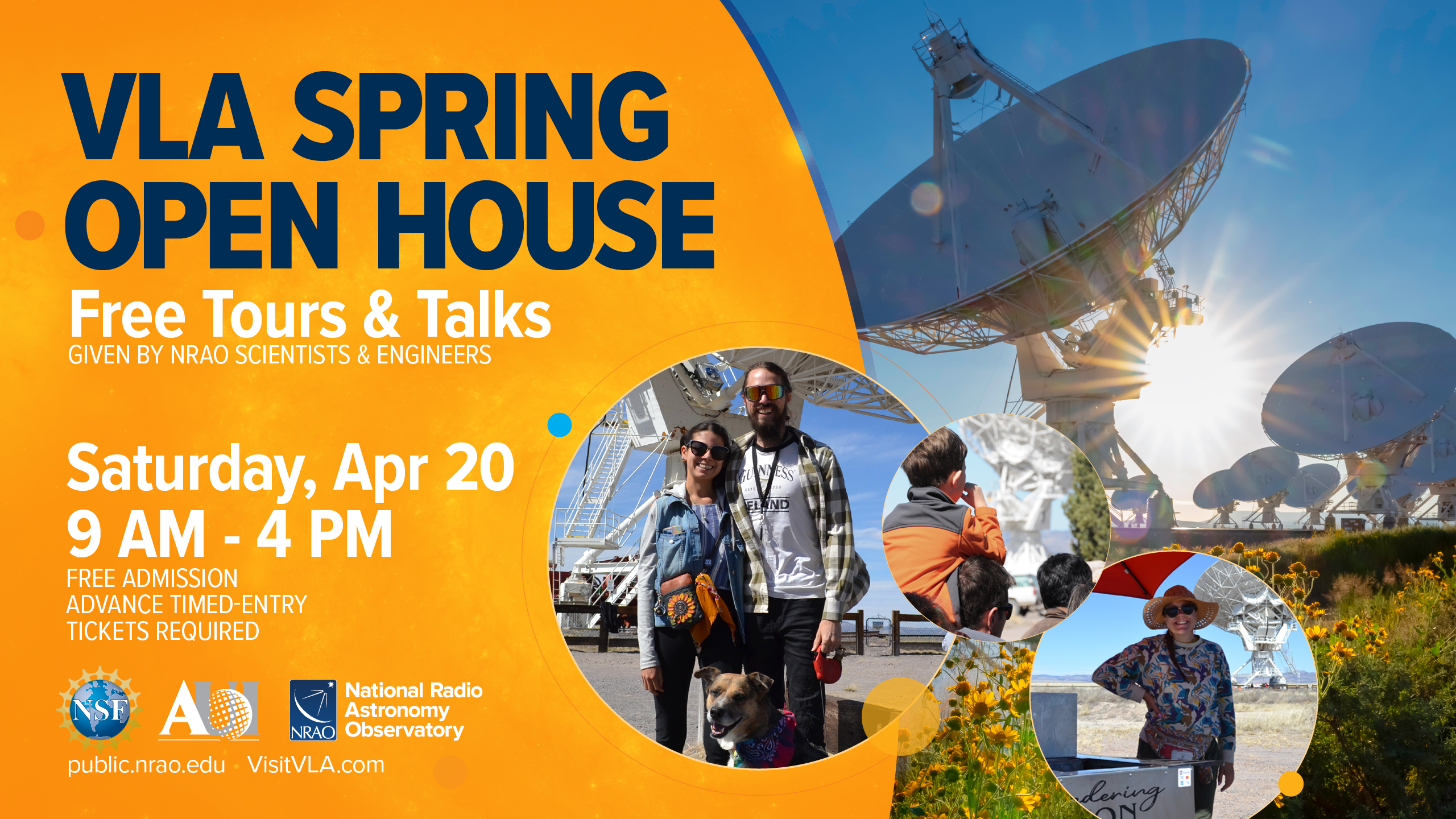
Join us at the NRAO Karl G. Jansky Very Large Array on Saturday, April 20, 2024, from 9am to 4pm (MST). Learn about this incredible scientific facility from the experts. Free admission, advance timed-entry, and tickets are required.
Fast Radio Bursts: A Cosmic Mystery!
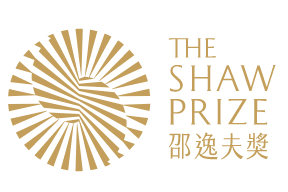
Fast Radio Bursts (FRBs) are one of the most exciting recent discoveries in the field of radio astronomy, and they were discovered by astronomers in West Virginia! Most FRBs happen faster than you can blink an eye, and in that time they blast out more energy than our sun produces in several days. In spite of this spectacular behavior, we still do not know what they are.
West Virginia University Professors Duncan Lorimer and Maura McLaughlin, 2 of the 3 astronomers awarded the 2023 Shaw Prize for the 2007 discovery of FRBs, delivered public lectures at the Science Center Auditorium on March 20th.
The lecture recording will also be posted to YouTube soon.
How On Earth - KGNU Science Show

Astronomy Highlights - listen to the KGNU podcast science show "How on Earth" with Jennifer Bates from NRAO. Learn about the NRAO Radio Astronomy Data Imaging and Analysis Lab project.
Read more about the Broadening Participation Programs at NRAO.
Recent Science Media Releases
|
How to Safely View the Eclipse |
|
|
NRAO and SpaceX Coordinate to Protect Radio Astronomy |
|
|
NRAO Shines at New Mexico Governor's STEM Challenge |
|
|
Dr. Patricia (Trish) Henning: Leading the Way in Radio Astronomy |
|
|
National Scale Computing |
|
|
German Astronomers Share Proposed Science for the ngVLA
|
|
|
Contact the NRAO press office to share your new and exciting science results. |
From the Archives
Ellen Bouton
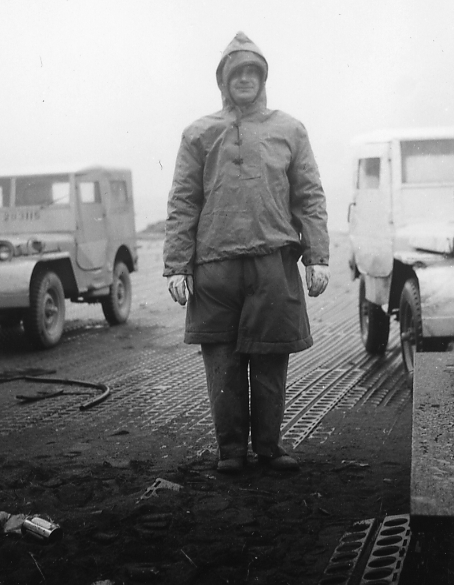
About this month's photo: Grote Reber, bundled up here against Alaska late summer weather, participated in the Naval Research Laboratory's August-September 1950 solar eclipse expedition to Attu, Alaska. The weather was terrible on eclipse day, but NRL was actually doing radio observations. In his October 3, 1950 letter to Otto Struve in Berkeley, Reber wrote, "The Attu eclipse was probably the first total eclipse of the sun which was successfully observed in a pouring rain during a hurricane. Good results were achieved at 3, 10, 67cm wavelength." We hope for clear skies for the April 8, 2024 solar eclipse!
From the Archives is an ongoing series illustrating NRAO and U.S. radio astronomy history via images selected from our collections of individuals' and institutional papers. If readers have images they believe would be of interest to the Archives, please contact Ellen Bouton.


